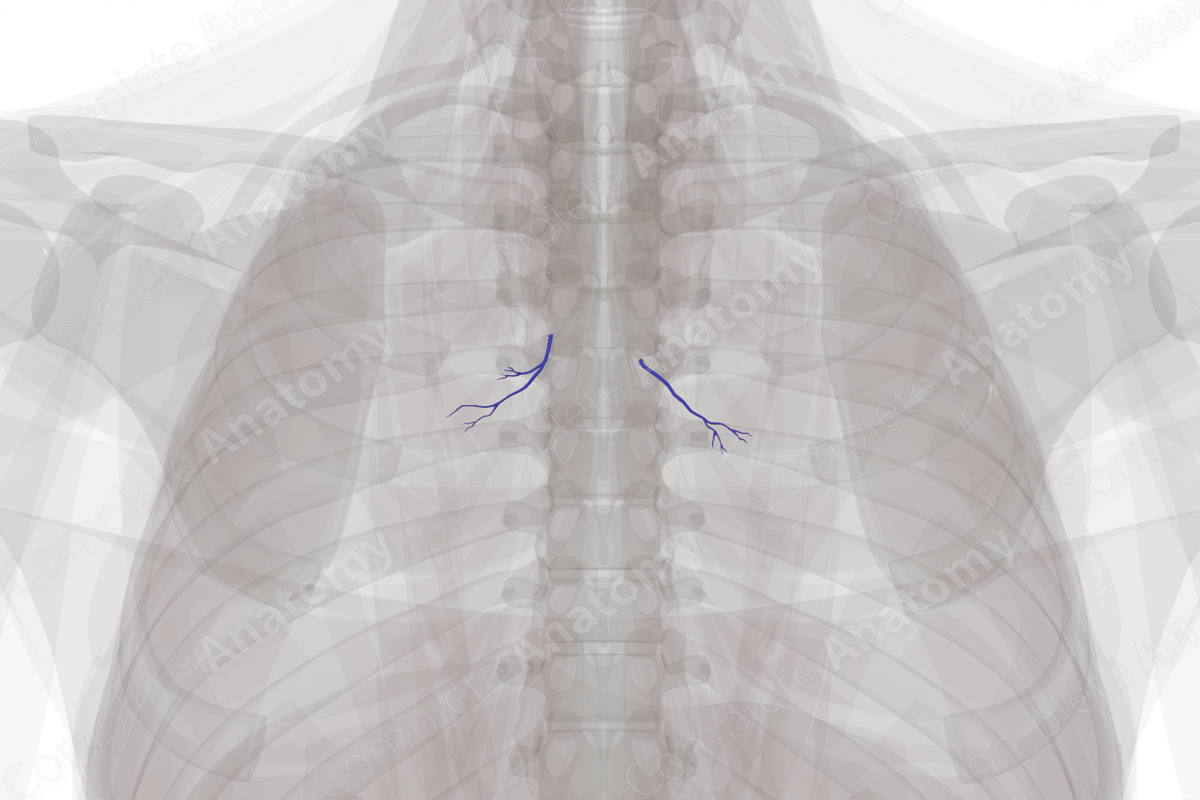
Description
The veins of the respiratory system do not refer to the pulmonary system, but to the systemic system that provides oxygenated blood and nutrition to the connective tissue of the lungs. These include the highly variable bronchial veins.
A left and right bronchial vein arise from the posterior surface of the bronchi. These veins travel posteriorly to their terminations at the azygos vein on the right and the hemiazygos vein, or sometimes the superior intercostal vein, on the left.
The bronchial veins receive blood from the bronchi, hilar structures, such as lymph nodes, and visceral pleura adjacent to the hilum.
Related parts of the anatomy
Learn more about this topic from other Elsevier products
Development of the respiratory system: Video, Causes, & Meaning

Development of the respiratory system: Symptoms, Causes, Videos & Quizzes | Learn Fast for Better Retention!





